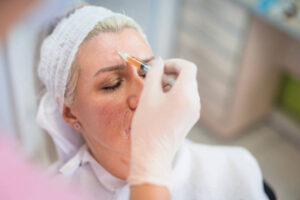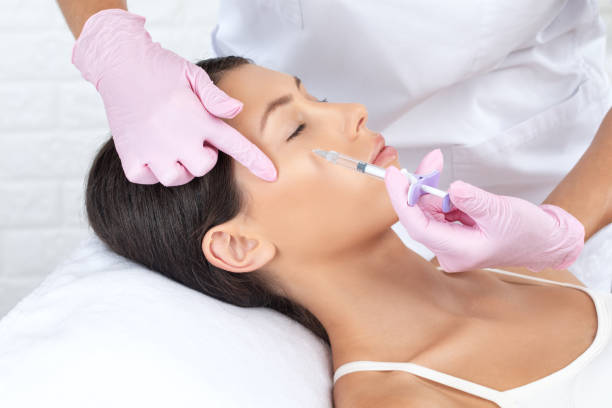How PRP Treatment Revitalizes Skin for a Fresh Look
In the quest for youthful and vibrant skin, many individuals seek innovative treatments that promise remarkable results without invasive procedures. One such treatment that has gained significant popularity in recent years is Platelet-Rich Plasma (PRP) therapy. Often referred to as the “vampire facial,” PRP treatment harnesses the body’s natural healing properties to rejuvenate the skin. In this article, we will explore how PRP treatment works, its benefits, the procedure itself, and what to expect afterward.
Understanding PRP Treatment
PRP Treatment in Abu Dhabi involves drawing a small amount of your blood, processing it to concentrate the platelets, and then injecting this rich plasma into specific areas of your skin. Platelets are known for their role in healing and regeneration, making them an ideal component for skin rejuvenation. The treatment aims to stimulate collagen production and improve skin texture, tone, and overall appearance.
The Science Behind PRP
At the core of PRP therapy is the concept of utilizing growth factors and proteins found in platelets. When injected into the skin, these components signal the body to accelerate healing and regeneration processes. This results in improved blood circulation, enhanced collagen production, and increased elasticity, all of which contribute to a fresher and more youthful appearance.

Benefits of PRP Treatment for Skin
PRP therapy offers a multitude of benefits that make it an attractive option for individuals seeking skin rejuvenation:
- Natural Results: Since PRP uses your body’s own components, the results appear natural and subtle, avoiding the overdone look associated with some cosmetic procedures.
- Minimal Downtime: Unlike surgical procedures, PRP treatment typically involves little to no downtime. Most individuals can return to their daily activities shortly after the procedure.
- Versatility: PRP can be used on various areas of the face, including under-eye hollows, cheeks, and forehead, as well as other body parts like the neck and hands.
- Long-Lasting Effects: While results may vary, many individuals experience improvements for several months post-treatment as collagen production continues.
- Safe and Effective: Being a minimally invasive treatment with a low risk of allergic reactions, PRP is considered safe for most people.
Who Can Benefit from PRP Treatment?
PRP therapy is suitable for a wide range of individuals, particularly those looking to address common skin concerns associated with aging. It can be beneficial for:
- Individuals with Fine Lines and Wrinkles: PRP can help smooth out fine lines and reduce the appearance of deeper wrinkles.
- Those with Dull or Uneven Skin Tone: The treatment can rejuvenate tired-looking skin and promote a more radiant complexion.
- People with Scarring: PRP is effective in reducing the appearance of acne scars and other types of skin imperfections.
- Anyone Seeking Preventive Care: Younger individuals may opt for PRP as a preventive measure to maintain skin health and elasticity.
The PRP Treatment Procedure
1. Initial Consultation
Before undergoing PRP treatment, you’ll have a consultation with a qualified practitioner. This is your opportunity to discuss your concerns, goals, and medical history. The practitioner will assess your skin and determine if you are a suitable candidate for the procedure.
2. Blood Draw
The first step in the treatment process involves drawing a small amount of blood, similar to a routine blood test. This is typically done from your arm.
3. Centrifugation
Once the blood is collected, it is placed in a centrifuge—a device that spins at high speeds to separate the components of the blood. This process isolates the platelet-rich plasma from the red blood cells and other elements.
4. Injection
After the separation, the concentrated PRP is drawn into a syringe. The practitioner will then inject the PRP into specific areas of your skin using fine needles. Depending on the treatment area and your comfort level, a topical anesthetic may be applied beforehand.
5. Post-Treatment Care
Following the injections, you may experience some mild swelling, redness, or bruising, which is normal and usually subsides within a few days. Your practitioner will provide specific aftercare instructions, which may include avoiding strenuous exercise and sun exposure for a short time.
Results and Longevity
Most individuals notice immediate improvements in skin texture and tone following PRP treatment. However, the full benefits become apparent over the following weeks as collagen production increases. Results can last anywhere from six months to a year, depending on individual factors and the specific areas treated.
Regular maintenance sessions may be recommended to prolong the effects and maintain your youthful appearance.
Common Myths About PRP Treatment
Despite its growing popularity, there are several misconceptions surrounding PRP therapy. Let’s clear up some of the most common myths:
Myth 1: PRP Treatment Is Painful
While the idea of injections may sound daunting, most individuals report only mild discomfort during the procedure. The use of topical anesthetics can further minimize any potential pain.
Myth 2: PRP Is Only for Older Adults
PRP therapy is beneficial for people of all ages. Younger individuals can use it as a preventive measure to maintain skin health and combat early signs of aging.
Myth 3: Results Are Immediate and Permanent
While some improvements may be noticeable right away, the full effects develop over weeks. Additionally, results are not permanent, and maintenance treatments are necessary for lasting benefits.
Aftercare Tips for Optimal Results
To ensure the best possible outcomes from your PRP treatment, follow these aftercare tips:
- Avoid Sun Exposure: Protect your skin from direct sunlight, as UV rays can irritate the treated areas and hinder healing.
- Stay Hydrated: Drink plenty of water to support skin hydration from within.
- Use Gentle Skincare Products: Stick to gentle, non-irritating skincare products for at least a week post-treatment.
- Avoid Strenuous Exercise: Refrain from intense workouts for a couple of days to minimize swelling and discomfort.
Potential Side Effects
While PRP treatment is generally safe, it’s essential to be aware of potential side effects:
- Swelling and Redness: Mild swelling and redness at the injection site are common and usually resolve quickly.
- Bruising: Some individuals may experience bruising, which can be minimized by avoiding blood thinners before treatment.
- Infection: Though rare, there is a slight risk of infection at the injection site.
Conclusion
PRP treatment has emerged as a powerful option for individuals looking to revitalize their skin and achieve a fresh, youthful appearance. By harnessing the body’s natural healing abilities, PRP therapy stimulates collagen production and improves skin texture, providing long-lasting and natural-looking results.
If you’re considering PRP treatment, consult with a qualified practitioner to explore how this innovative therapy can benefit your skin. Embrace the opportunity to rejuvenate your appearance and enhance your confidence with PRP therapy!
FAQs
1. How many PRP sessions are needed for optimal results?
Typically, 2 to 3 sessions spaced a few weeks apart are recommended for the best outcomes, followed by maintenance treatments.
2. Is PRP treatment safe for everyone?
While PRP is generally safe, individuals with certain medical conditions or blood disorders should consult with their healthcare provider before proceeding.
3. How long do the results of PRP treatment last?
Results can last from six months to a year, depending on individual factors and maintenance treatments.
4. Can PRP be combined with other treatments?
Yes, PRP can be combined with other aesthetic treatments, such as fillers or laser therapy, for enhanced results.
5. What should I avoid after PRP treatment?
Avoid sun exposure, strenuous exercise, and harsh skincare products for a few days following the treatment to ensure optimal healing.

